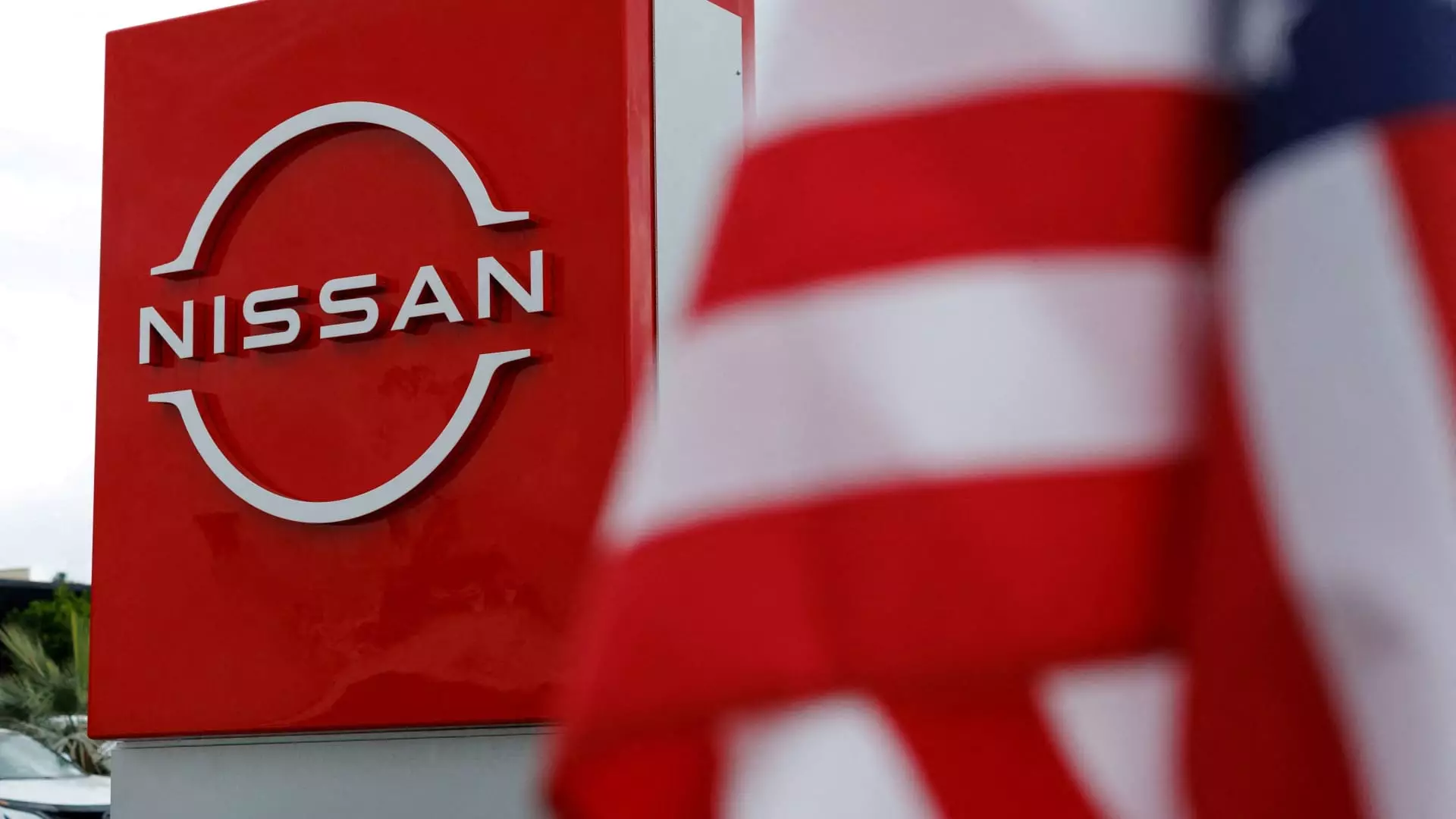The automotive landscape has seen seismic shifts in recent years, particularly with the implementation of hefty tariffs by the Trump administration. For Nissan, these 25% auto tariffs are not just obstacles; they present an opportunity for profound change and long-overdue assessments within its U.S. operations. The newly appointed Americas leader, Christian Meunier, sees these tariffs as a catalyst to “max out” production at the company’s primary facility in Smyrna, Tennessee. That ambition, however, raises pertinent questions about the preparedness of Nissan to adapt to such abrupt economic pressures.
While Meunier articulates a strong strategy to enhance domestic production, one cannot overlook the financial strain that these tariffs place on both consumers and manufacturers alike. The underlying sentiment here is that Nissan may indeed profit from increased U.S.-based manufacturing and production, but these advantages come with significant risks that could outweigh the benefits. Americans value affordability, and as Nissan tinkers with production lines and localization of parts, the concern is whether the consumer will bear the brunt of increased costs.
Maxing Out: The Push for Increased Capacity
Meunier’s determination to fully utilize the Smyrna facility is commendable, aiming to produce 640,000 vehicles a year. However, this ambition feels more like wishful thinking than concrete reality, especially given that last year the factory generated just over 314,500 vehicles on a double-shift schedule. This raises the question of whether Nissan measures true production capability accurately or if they are caught up in a spirited pep rally aimed at revitalizing investor confidence.
The complexity around achieving maximum production is overwhelming, considering that Nissan takes multiple product lines into account. Such an ambitious plan may easily fall victim to market volatility, fluctuating consumer preferences, and continuing changes in regulation. Simply put, a company cannot simply decide to “max out” its production; it requires a systematic approach backed by reliable forecasting and sound business practices.
Strategic Product Mix: A Balanced Portfolio?
Notably, Nissan emphasizes an exciting product mix, considering additions like hybrid vehicles and the Infiniti model. Meunier’s assertion that Nissan is “looking at hybrid production” speaks to a growing international demand for eco-friendly vehicles. Yet, will consumers find these offerings attractive enough, or are they simply more shiny objects in an extensive lineup that has struggled to maintain relevance?
Moreover, Nissan faces a peculiar dilemma: while they focus on electric and hybrid vehicles, they must not neglect the mainstream models that have solidified their standing in a competitive market. Lowering prices on popular models like the Rogue and Pathfinder may seem like a tactical retreat, but it serves as an acknowledgment of market pressures rather than a bold, forward-thinking strategy. Price adjustments are good, but they’re more of a temporary Band-Aid rather than a sustainable long-term solution in a fiercely competitive landscape.
Manufacturing in America: Pros and Cons
Declaring the intention to bolster domestic manufacturing while operating plants in Mexico undoubtedly reflects a paradox. Meunier’s emphasis on improving local production runs counter to the challenges presented by shifting supplies amid upcoming tariffs. Growing labor costs and potential disruptions in continuity could hurt not only profits but also job security at plants in both the U.S. and Mexico.
Nissan’s springboard into domestic production should also be tempered with caution. For instance, Meunier’s goal to enhance local sourcing reflects an optimistic strategy that must deal cautiously with an already complex international supply chain. The risk of raising production in the U.S. may lead to additional constraints, significantly when tariffs on auto parts take effect. The irony here is palpable: as they aim to localize, any form of bottleneck could nullify the perceived advantages of domestic production.
Future Roadblocks: Will Tariffs Drive Up Costs?
There’s also an unmistakable sense of urgency regarding how tariffs on imported auto parts could disrupt Nissan’s intentions. As Meunier pointedly states, “Hopefully there will be solutions that don’t hurt completely,” reflecting the precarious balance facing automakers in today’s regulatory environment. The notion that the tariff-induced challenges should prompt immediate action is key, but it raises the question: What if the solutions don’t come in time?
Nissan’s robust plans for production increase hinge on the assumption that government alleviation will take place or that consumer demand remains steadfast. If these assumptions falter, the company’s grand ambitions could easily encounter bumps that translate to disastrous consequences, both financially and reputationally. Managing change in the automotive sector is akin to navigating a minefield, with one miscalculation potentially derailing years of careful planning.
In sum, as Nissan embarks on its ambitious journey to reclaim its standing in the U.S. market, one cannot ignore the logistical challenges they face, the market realities they navigate, and the looming specter of tariffs that could complicate their ascent.

